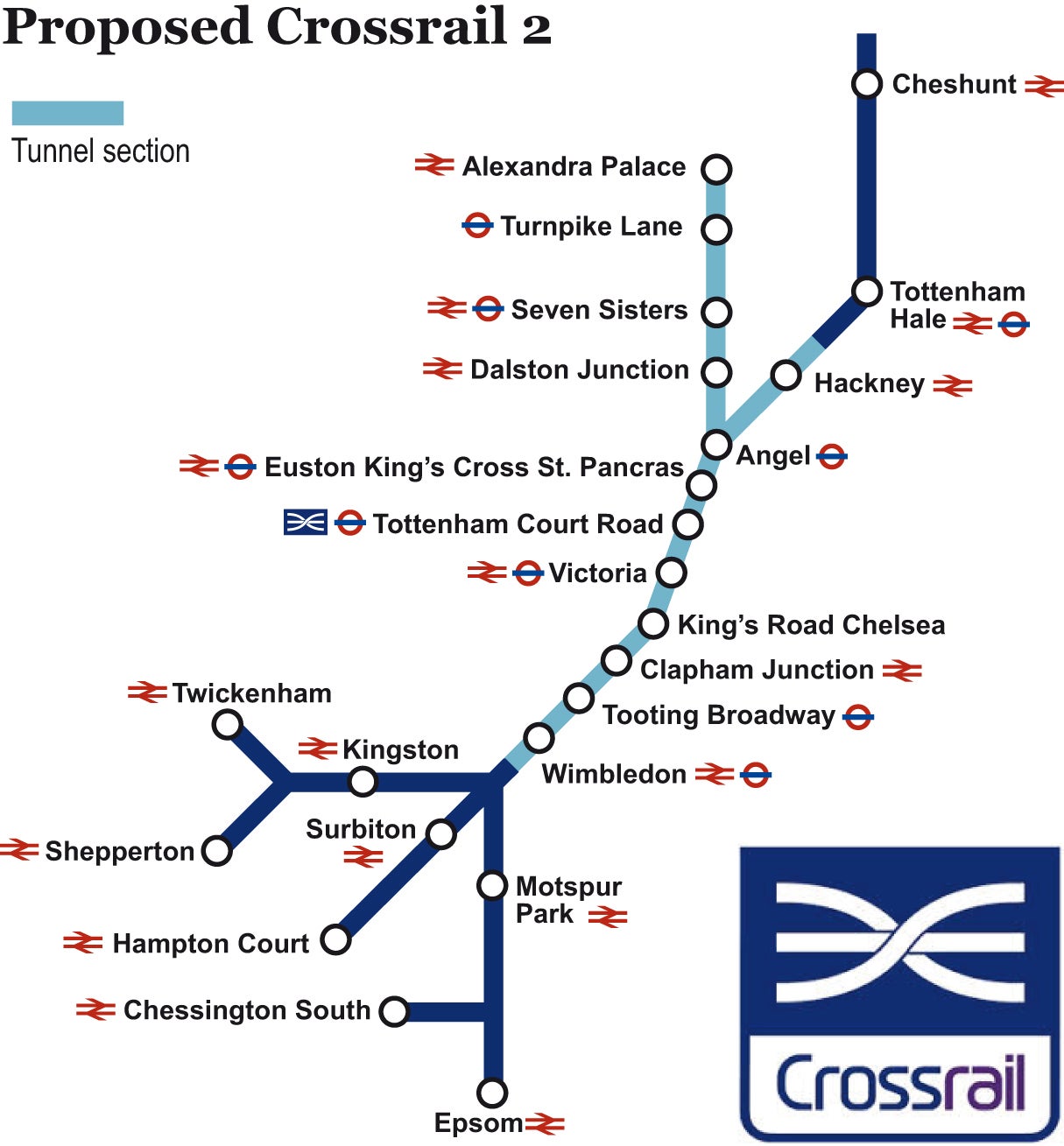A bridge across London's north/south divide: Treasury gives £12bn Crossrail 2 project funds to get started
George Osborne and Danny Alexander put new London rail link at centre of multi-billion pound infrastructure plan

The Government is ready to announce the first steps towards building a new railway linking north and south London as part of a multi-billion pound increase in infrastructure spending.
Under plans to be set out by Treasury ministers, funds are expected to be committed towards carrying out initial scoping work on the £12bn Crossrail 2 project which would connect south London with the new High Speed 2 network.
The promise of funding to start the project – which would run from Wimbledon in the South to Alexandra Palace in the North – would allow building work to begin following completion of the Crossrail 1 in 2018.
George Osborne and Danny Alexander are expected to announce big increases in Government capital infrastructure spending as part of the Comprehensive Spending Review which, unusually, is to be split over two days. Ministers have already indicated the capital spending will rise by £3bn in 2015/16 and by £15bn over the next Parliament.
But Mr Osborne is expected to raise this figure still further today and will announce plans to bring forward spending plans pencilled in for later years in order to “offset” the austerity caused by other Government spending cuts.
Then on Thursday, Mr Alexander will announce details of the new capital schemes which will go-ahead as a result of the increased spending. Road transport is likely to be a key focus of the Government’s plans.
The Chief Secretary will announce plans for a new £600m six-lane motorway bridge over the River Mersey between Runcorn and Widnes and a new relief road to reduce traffic on the M4 near Cardiff.
He will also give the go-ahead to a major upgrading of the A14. The road is the main east-west route connecting Felixstowe, Britain’s biggest container port, with the Midlands. Officials are considering building two new roads around Cambridge and levying a toll on a resurfaced 18-mile section of the road.
Other projects that may be announced include an upgrade to the northern stretch of A1, which will for the first time provide a continuous motorway or dual carriage way link between London and Scotland along the east coast. Lanes may also be added to the A303 – known all too well to holidaymakers – which runs from Basingstoke through Somerset (past Stonehenge) to the south-west of England and to the A47, which runs through the Norfolk Broads.
Other areas likely to see increased capital spending will be house building and high-speed internet infrastructure. As part of this, ministers may remove the cap on councils’ borrowing power, so they can build more affordable homes, as well as bringing in “use it or lose it” planning permission for developers.
Councils are also expected to be allowed to bid for capital funding for infrastructure projects to boost local economies.
There is expected to be a “single pot” of money which will be available to schemes to promote regional growth as recommended in a report by Michael Heseltine last year. Lord Heseltine said the pot should be worth £49bn over four years.
But the most eye-catching initiative is likely to be the plans for a second London Crossrail project – which has long been a key ambition of the Mayor of London, Boris Johnson.
Earlier this month he argued that it was “critical” for money be made available so the project could begin in 2019. Otherwise, he said, engineering expertise would be lost after the completion of Crossrail 1. “The question about Crossrail 2 is not whether it should happen, but how quickly we can get it moving,” he said.
Tonight the Treasury was remaining tight lipped about the extent of the capital expenditure plans. But sources suggested Mr Osborne had accepted recommendations from the IMF that more needed to be done to boost the economy in the short term from large scale projects that would also boost economic growth and help Britain remain competitive over the longer term.
Figures released earlier this week showed that infrastructure spending had fallen by 40 per cent on this time last year.
This is despite the Government’s National Infrastructure Plan launched three years ago with the aim of co-ordinating priority investment and included a £250bn shopping list of road, rail and energy projects. But industry has complained that high-profile announcements have obscured the difficulties of getting project “shovel ready” with long funding and planning delays.
Join our commenting forum
Join thought-provoking conversations, follow other Independent readers and see their replies
Comments
Bookmark popover
Removed from bookmarks